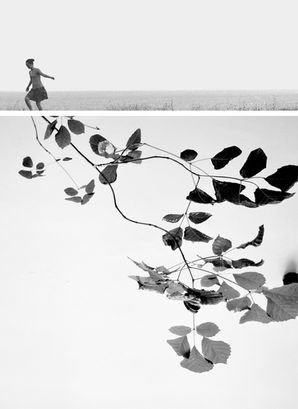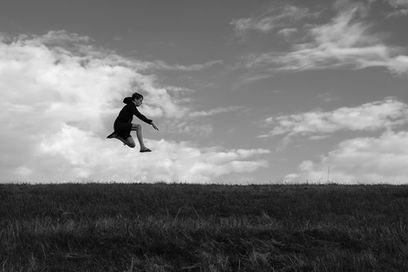
STREET BEATS
May 27, 2020
INTERVIEW
PHOTOGRAPHY Mark Davidson
INTERVIEW Melanie Meggs
Mark Davidson has discovered the power of capturing the beauty of life through the lens of a camera. After a work trip to the Philippines sparked his interest in photography, the Melbourne-based radio producer and photographer has become a master of street photography, creating scenes full of emotion and contrast. His journey began with a Sony Cybershot and trips to Southeast Asia, and his self-taught skills have taken him around the world. Join us as we explore Mark’s story and gain an insight into his passion for photography.

“I first came to photography through travel. The first camera I bought for myself was a Sony Cybershot and I loved taking pictures with my mates on trips through South East Asia. And I think I got some okay results, even in those early days. But while I was focusing on my radio producing career in my twenties, photography remained a hobby, it was always relegated to something I did on holiday.
I decided to take photography more seriously around a year and a half ago, following a work trip to the Philippines. I travelled to Cebu in the Philippines with a group of journalists to cover the launch of an airline and roomed with a photographer from Melbourne. He’s an amazing photographer and we spoke a lot about the craft on that trip, and spent some time shooting in Manila. His enthusiasm inspired me to take it more seriously when I got home.
While I’m largely self-trained, I did do a 10-week course at a community college in London while I was living there. Other than that I’ve just been figuring it out for myself. Wish I hadn’t have left it so late to be honest.”
IN CONVERSATION WITH MARK DAVIDSON
THE PICTORIAL LIST: Mark, where do you find your inspiration to photograph?
MARK DAVIDSON: I find inspiration on the streets of Melbourne, hunting the light and shadows in the laneways. I also read a lot of articles by foreign correspondents and have a list of places I want to travel to with my camera.
TPL: Where is your favourite place(s) to photograph?
MD: I shoot mainly in Melbourne’s CBD. North Melbourne train station has been a particularly fruitful location for me. But I keep returning to the lanes and alleys of Melbourne.
TPL: Do you have any favourite artists or photographers you would like to share with us?
MD: I love the work of Trent Parke, Alexey Titarenko, Fan Ho, Josef Koudelka and Robert Frank. No surprises there...they’re all masters of photography. I’m also a big fan of modern photographers like Antonio Ojeda and Dimpy Bhalotia.
But closer to home, there is a great community of Melbourne street photographers that I follow with keen interest. I am constantly amazed by the top-shelf, innovative work they produce.
TPL: Has your style of photographing changed since you first started?
MD: Yes, absolutely. I’ve only been shooting street photography seriously for around a year but in that time I have moved away slightly from the long-exposure, black-and-white street stuff I was doing to focus more on high-contrast, deep shadow scenes and mixing it up with colour and black and white.
TPL: Do you think equipment is important in achieving your vision in your photography? What would you say to someone just starting out?
MD: No, not at all. Ansel Adams and Henri Cartier-Bresson had far less capable cameras than the ones we use today. People get way too hung up on gear. Find out what style of photography interests you and get the equipment that best suits that purpose. Obviously your choice of lens will differ if you’re a landscape photographer as opposed to a wedding photographer. But don’t stress too much about your camera. You can still produce some incredible work with a camera that doesn’t have the latest and greatest specs.
Criticism is something we can avoid easily by saying nothing, doing nothing, and being nothing. - Aristotle

TPL: What characteristics do you think you need to become a 'good' photographer? What's your tips or advice for someone in your genre?
MD: Patience. 100 percent. There are few locations around Melbourne of note where the light hits the wall at a certain time of day and creates these incredible colours and shapes. I’ve returned to these spots around ten times in the past few weeks but still haven’t got the shot I’m after.
I’ve also camped out in other locations for an hour or more to get a frame. That’s my style - a lot of other photographers don’t like to work that way and won’t agree. But I’m completely happy working solo; even if I don’t come away with a great shot I’ll just wander the streets for hours looking for the light. Patience pays you dividends in the long run.
TPL: Have you ever been involved in the arts before photography?
MD: Not really. Unless you count playing in a band. We put out a couple of EPs and gained a bit of traction in our hometown. We were pretty shit to be honest.
I’m hopeless at drawing and painting.
TPL: Are there any special projects you are currently working on that you would like to let everyone know about?
MD: No, not at the moment. I would love to find a project that combines my love of travel to far-flung locations and photography. But that’s not possible right at this moment.
TPL: "If I wasn't photographing what would I be doing?...
MD: Working as a radio producer and journalist, which is what I’m currently doing! I work on a breakfast radio program, which gives me the freedom to photograph in the afternoon and evening."

Mark Davidson's journey serves as an inspiring example of the power of pursuing one's passions. He has honed his craft through a combination of self-taught skills, dedication and an affinity for street photography. His work has taken him all over the world, creating stunning images that capture the beauty of life and convey emotion. To follow Mark's journey, his creative process and the various places he has visited, follow him on his street photography journey.
































